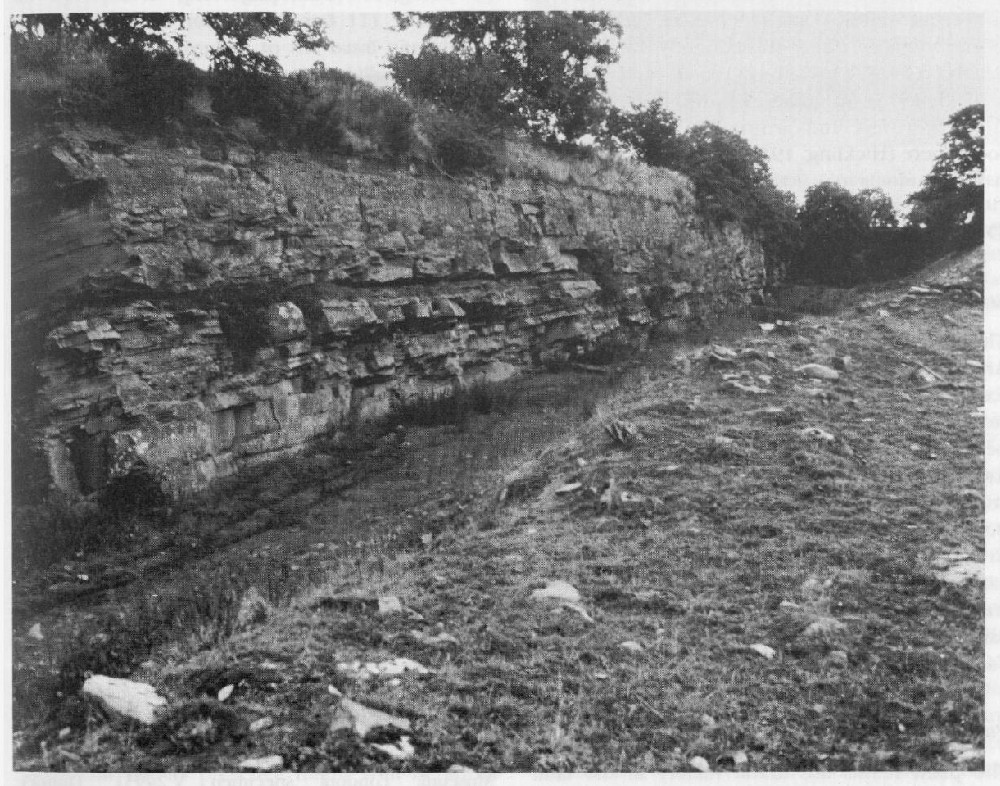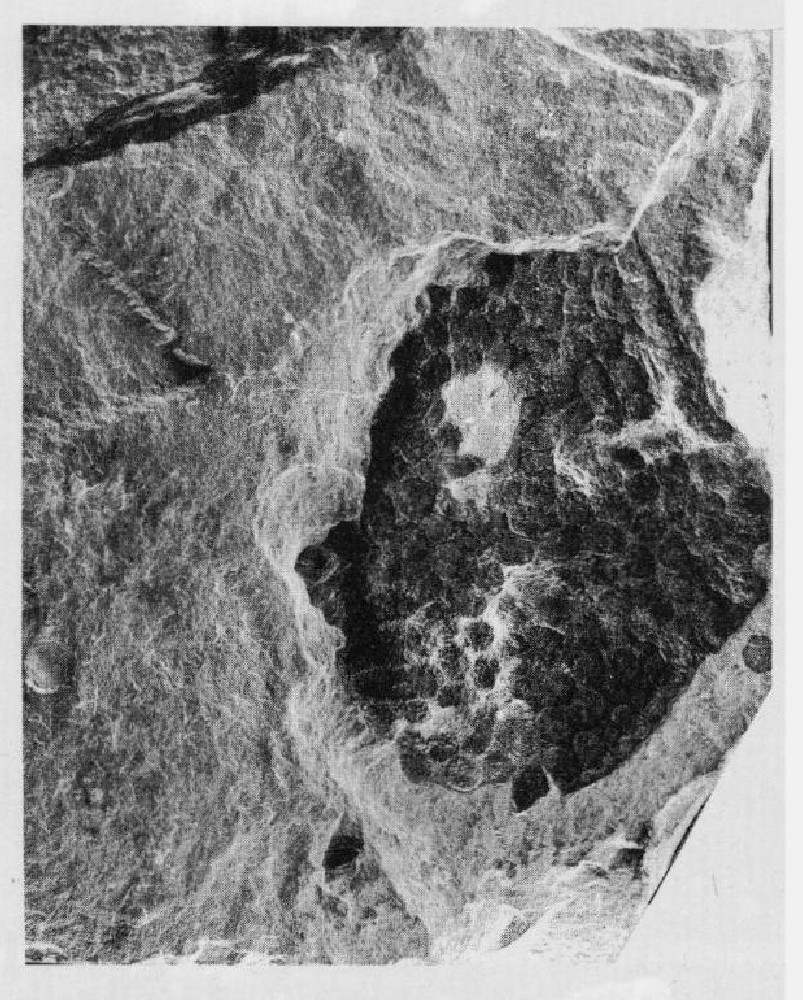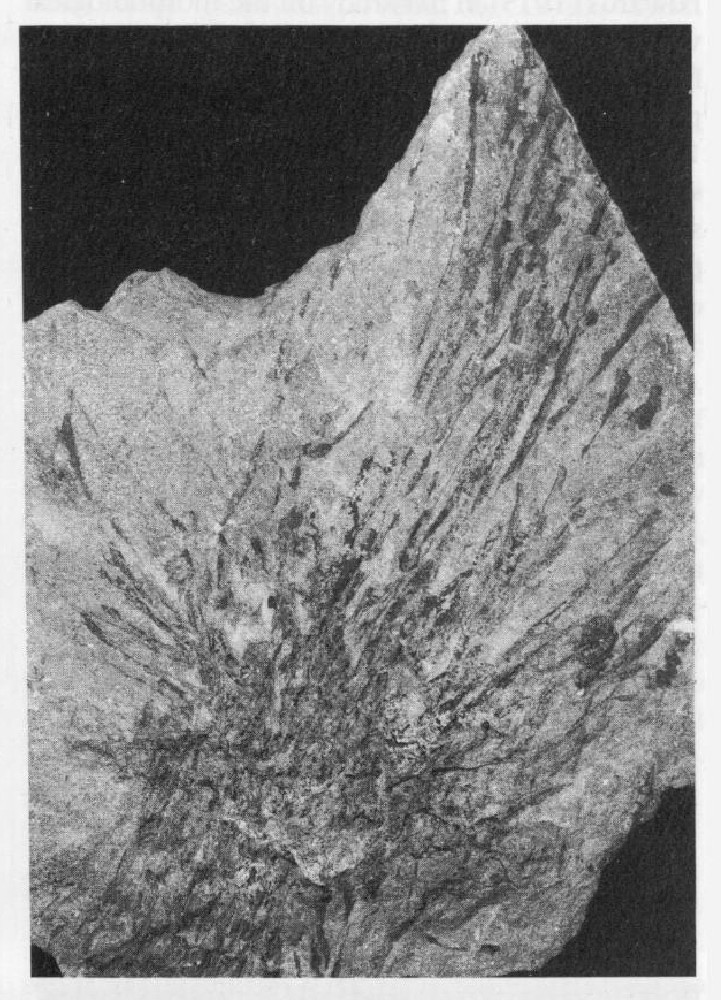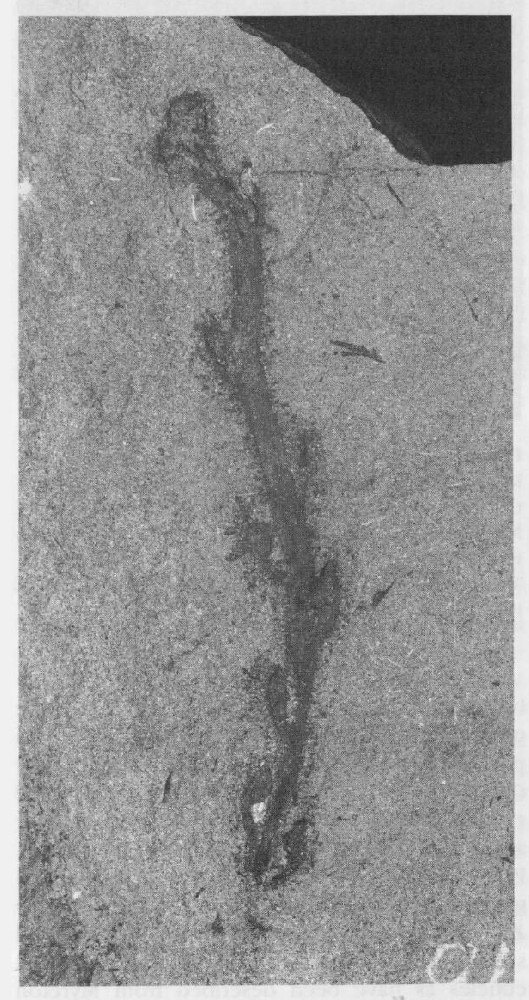Turin Hill
Highlights
Turin Hill is the best site for plant fossils from the Lower Devonian Arbuthnott Group flora, the most typical Zosterophyllum Zone flora in Britain, and one of the best examples of its type in the world
Introduction
The famous Old Red Sandstone palaeontological sites on Turin Hill, which lie near Forfar, Tayside Region
Description
Stratigraphy
The geology of these quarries is described by Armstrong et al. in Friend and Williams (1978). Exposed here are interbedded red fluvial sandstones and grey-green lacustrine siltstones belonging to the Dundee Formation of the Arbuthnott Group (Campbell, 1913; Armstrong and Paterson, 1970; earlier called the Carmyllie Beds by Hickling, 1908). The plant fossils belong to the Zosterophyllum Zone of Banks (1980), indicating a Gedinnian or early Siegenian age for these strata. Palynological and fish evidence supports an early Gedinnian age (Edwards and Fanning, 1985, Table 1; Edwards, 1990).
Palaeobotany
The plant fossils are found mainly in the laminated, lacustrine siltstones. Commonest are impressions picked out by iron staining, but some coalified compressions and petrifactions also occur. The following assemblage has been reported to date:
Phaeophycophyta(?):
Prototaxites forfarensis (Kidston) Pia
Chlorophycophyta(?):
Parka decipiens Fleming
Pachytheca sp.
Rhyniophytoids:
Cooksonia caledonica Edwards
Zosterophyllopsida:
Zosterophyllum myretonianum Penhallow
Interpretation
Although Parka decipiens
Peach (1877) identified a specimen from here as Cyclopteris (photographically re-figured by Hoeg, 1942, pl. 46, figs 10 and 11). This form-genus is usually applied to the basal pinnules of certain Upper Carboniferous medullosan fronds, which is clearly out of the question here. More likely is that it is a specimen of Parka viewed from the lower surface (cf. Don and Hickling, 1917, pl. 54, fig. 9).
Niklas (1976a) described a poorly preserved specimen of Pachytheca from Turin Hill, and showed that it had a similar growth pattern to Parka. Niklas (1976b) also showed similarities in the chemical composition between the two, but pointed out, that the taxonomic significance of this similarity is uncertain.
A partially permineralized, branched axis, over one metre long, was described by Miller (1855, 1857) as part of a Lepidodendron stem. Most of the specimen is now believed to be lost, but Lang (1926) suggested that the holotype of Cryptoxylon forfarense Kidston was originally part of it. Kidston (1897) originally described the structure of the stem as being cellular, but Kidston and Lang (1924) later showed that it was pseudoparenchymatous and so transferred it to Nematophyton (syn. Prototaxites). Lang (1926) described a second species of Prototaxites from the Arbuthnott Group as Nematophyton caledonianum. To date, it has not been reported from Turin Hill but its presence might well be anticipated.
Slender branching axes occur commonly in the Arbuthnott Group
Edwards (1972) described a second zosterophyll, Z. fertile Leclercq, from the Arbuthnott Group near Arbroath (probably Kelly Den, but locality details are not clearly recorded), but it has not so far been reported from Turin Hill.
For many years, Zosterophyllum was the only type of vascular plant known from the Arbuthnott Group. More recently, however, Edwards (1970b) has described specimens from Aberlemno Quarry as Cooksonia caledonica. These show naked, dichotomous axes with terminal, globose sporangia, typical of Cooksonia, but the sporangia often have a marginal rim. The latter may only be a preservational feature, but may alternatively be the remains of a dehiscence mechanism (Edwards and Edwards, 1986). If the latter eventually proves to be correct, then the generic position of this species may have to be revised.
Several localities in the vicinity of Forfar and Arbroath have yielded the Arbuthnott Group flora (Kidston and Lang, 1924; Lang, 1926, 1927a; Lele and Walton, 1962a; Edwards, 1970b, 1975). Many of these have, however, been subsequently filled or flooded. In particular, Myreton Quarry, from where Lele and Walton (1962a) obtained cuticles of Zosterophyllum, has been landscaped. Of the sites still remaining, the Turin Hill quarries yield easily the most abundant and well-preserved plant fossils.
The Arbuthnott Group flora is the most typical Zosterophyllum Zone assemblage (sensu Banks, 1980) known from Britain. Other assemblages from this zone have been recorded from Caldy Island, Dyfed (Lang, 1927a, 1937), Newton Dingle, Shropshire (Edwards and Richardson, 1974) and Targrove Quarry (see above). However, these all contain a much lower proportion of zosterophylls. Zosterophyllum Zone assemblages also occur in Spitsbergen (Hoeg, 1942), the former Czechoslovakia (Obrhel, 1968) and Kuznetsk (Stepanov, 1975), but none has been reported to yield such well-preserved specimens. Turin Hill is thus of international importance for the study of the Zosterophyllum-dominated vegetation, which seems to have occurred widely in the lowland terrestrial habitats during the earliest Devonian of the northern hemisphere; the radiation of this vegetation marked the first phases of the diversification of the land floras in this part of the world (see Chapter 3 for comments on the more 'advanced' floras found in Gondwana).
Conclusion
Turin Hill yields the best example of a Zosterophyllum Zone flora (about 400 million years old) from anywhere in the world. Other floras of this type have been reported from South Wales, the Welsh Borders, Spitsbergen, Czechoslovakia and Siberia, but none have yielded such well-preserved specimens. Most significant here is the presence of well-preserved examples of the unusual alga Parka, and of the early vascular plant Zosterophyllum. The latter is important as it is regarded as ancestral to the club-mosses which, in the Late Carboniferous (310–300 Ma), formed extensive tropical forests that resulted in thick, economically important coal deposits (see Chapter 6). The site is also important as the type locality for Cooksonia caledonica, a remnant of the primitive rhyniophytoid stock that more typically occurs in the Upper Silurian, and which is thought to represent the earliest type of upright land plant.




